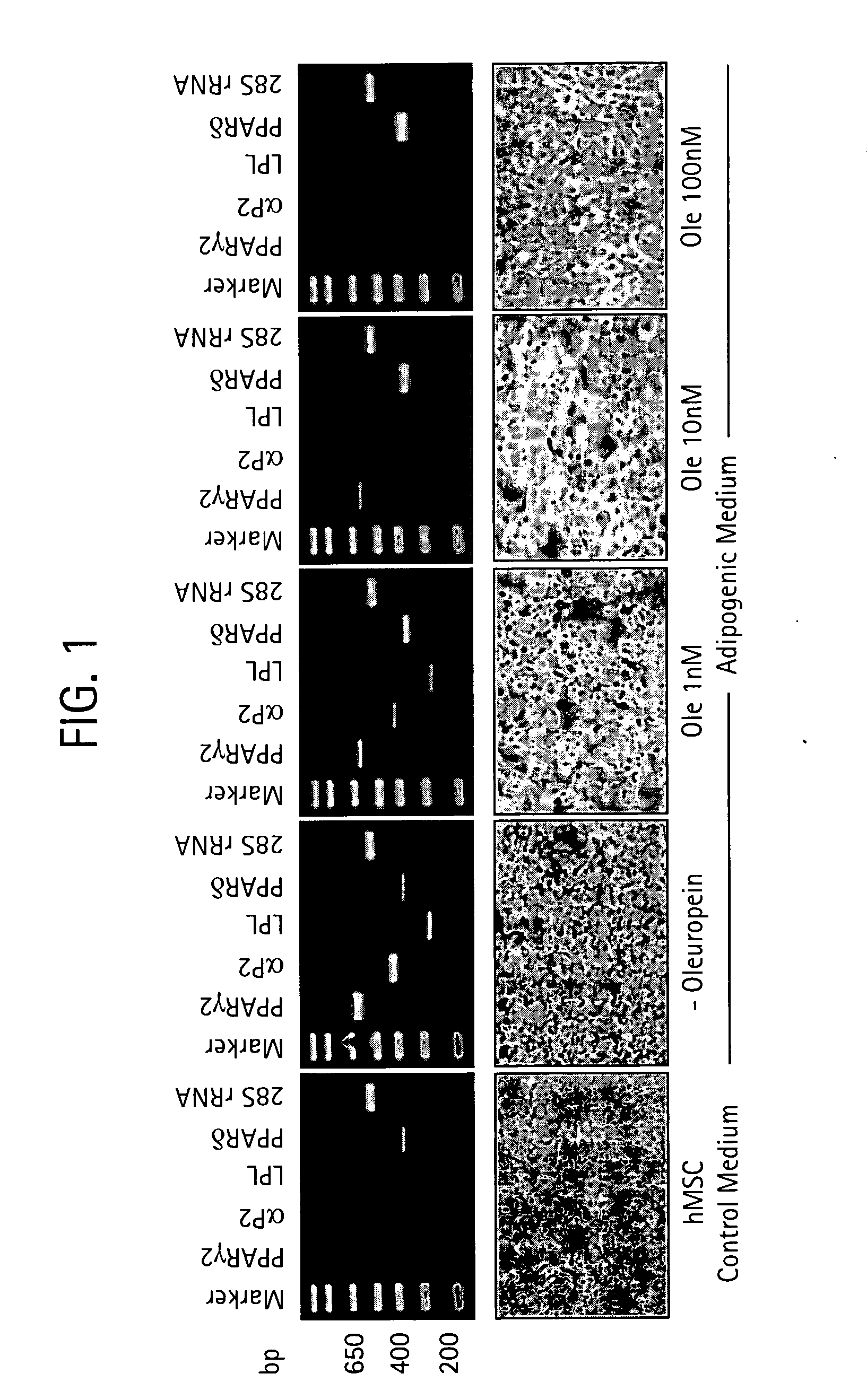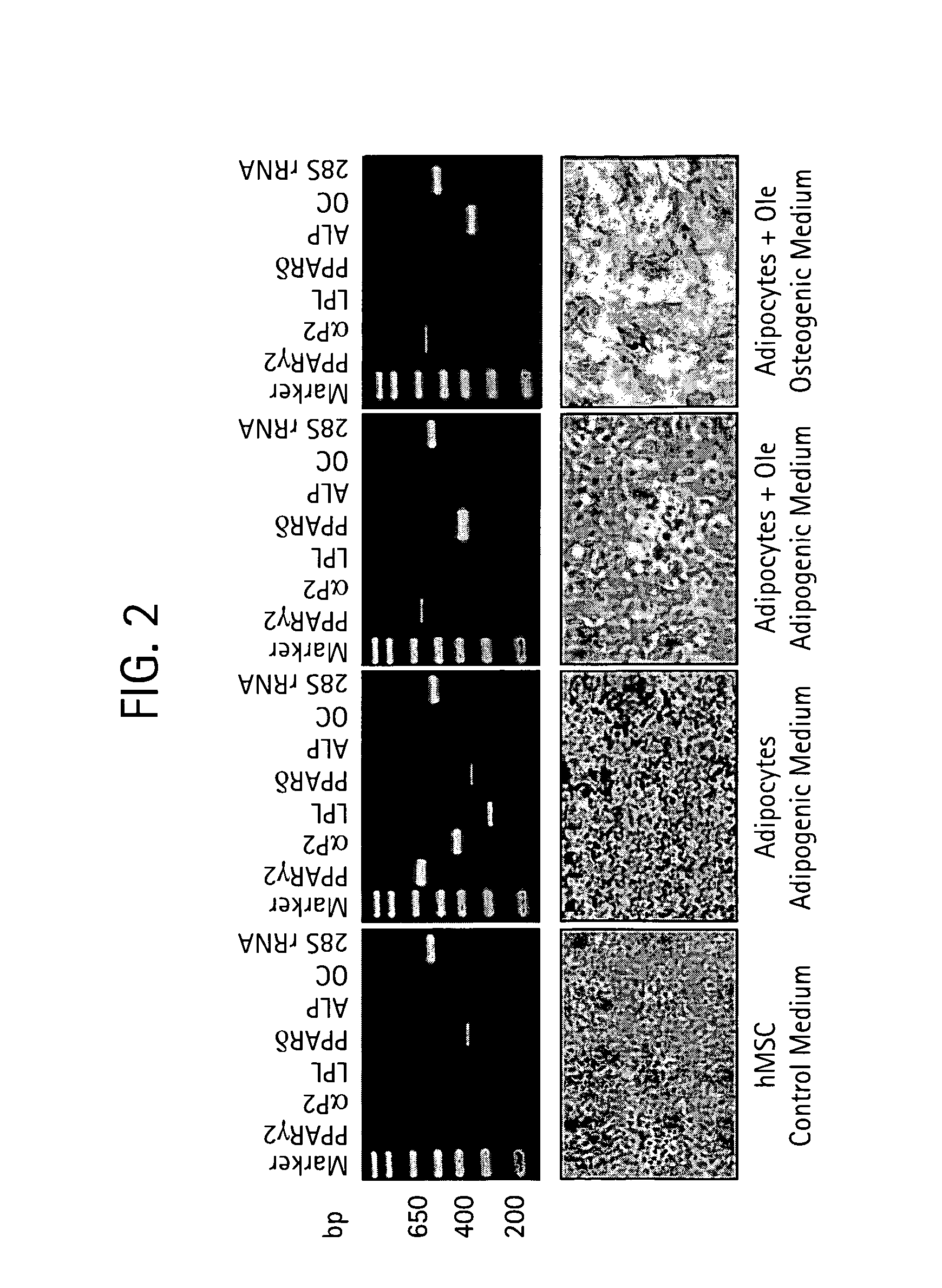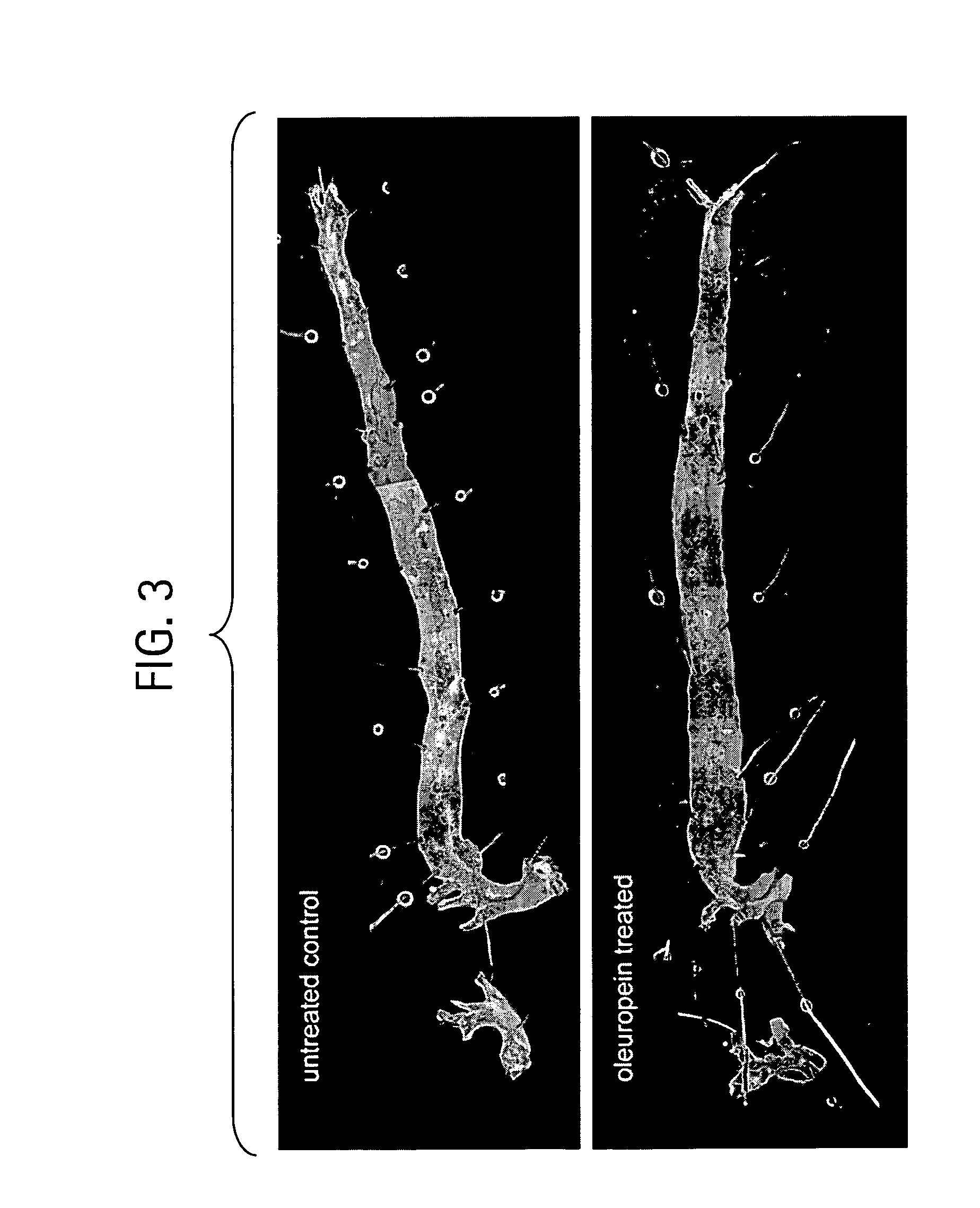Compositions and methods for treating obesity, obesity related disorders and for inhibiting the infectivity of human immunodeficiency virus
a technology composition, which is applied in the field of compositions and methods for treating obesity, obesity related disorders and inhibiting the infectivity of human immunodeficiency virus, can solve the problems of obesity and its associated complications, serious contributors to increased morbidity and mortality, and heart attack, stroke, etc., and achieves the effects of reducing fat accumulation and weight gain, reducing the number of adipocytes, and reducing the number of fat cells
- Summary
- Abstract
- Description
- Claims
- Application Information
AI Technical Summary
Benefits of technology
Problems solved by technology
Method used
Image
Examples
example 1
Modulation of Adipogenesis and Lipodystrophy by Oleuropein
Oleuropein Modulates Adipocyte Differentiation
Methods
[0303]Human mesenchymal stem cells (hMSCs) at 104 cells / cm2 were cultured in MSC growth medium first to confluence. Adipogenesis was induced two days post confluence by culturing the cells in adipogenic medium (AIM) containing 10 μM dexamethasone, 1 μg / ml insulin, and 0.5 mM 3-isobutyl-1-methylxanthine, in the absence and presence of oleuropein at 1, 10 and 100 μM. Fresh culture medium was changed every 3 days. Full differentiation of hMSC to adipocytes was detected by Oil Red 0 staining at day 12. Gene expression was monitored by RT-PCR, using primers shown in Table 3.
Results
[0304]It was determined that oleuropein down-regulates adipocyte differentiation, fat accumulation and adipogenic gene expression in human mesenchymal stem cells (hMSCs). As seen in FIG. 1, hMSCs grown in control medium do not stain with Oil Red O (counterstained with hematoxylin), while hMSCs grown in...
example 2
Modulation of Endothelial Dysfunction and Atherosclerosis by Oleuropein
[0308]Oleuropein Reduces Diet-Induced Atherosclerosis in the Western Diet-Fed apoE ko Mouse
Methods
[0309]It was previously demonstrated that oleuropein and OLE, following administration to mice, could be detected in the blood and urine by LC-MS. To test whether oleuropein reduces diet-induced atherosclerosis, oleuropein was administered to apoE ko mice at various doses from 0.25 mg / ml, 2.5 mg / ml, and 25 mg / ml in the drinking water followed by feeding them with a Western diet containing 42% of calories from fat (Harlan-Teklad). At the 4 month time-point for the 0.25 mg / ml dose (daily dose 1.25 mg), serum levels of oleuropein achieved with this dose are comparable to those in animals fed a diet supplemented with olive oil.
[0310]The mice were sacrificed, blood and tissues collected. Aortas were dissected from the aortic valve to the iliac bifurcation, opened longitudinally, and pinned to a black wax surface. Atherosc...
example 3
Computational Approaches to New Treatments for Obesity
Methods
[0313]Detailed theoretical and computational analysis for binding of oleuropein to PPARδ, PPARγ and PPARα was performed, using an approach that combines AutoDock, MD and MM-PBSA calculations. We used the crystal structure of PPARδ and PPARγ ligand binding domains. The large ligand-binding site is formed by several α-helices, including the C-terminal AF-2 helix. We first used molecular docking to generate several distinct binding orientations, and performed molecular dynamics simulation to further relax the complex. Then, we applied MM-PBSA to estimate the affinity for each binding mode. The binding modes with the lowest free energy are expected to be the most favorable. We then analyzed the detailed interactions based on these binding modes.
Oleuropein Mimics the Binding Mode of High Affinity Ligands for PPARδ
[0314]FIG. 5a shows docking of oleuropein to PPARδ in the energetically most favorable binding mode (II), with free ...
PUM
| Property | Measurement | Unit |
|---|---|---|
| Molar density | aaaaa | aaaaa |
| Molar density | aaaaa | aaaaa |
| Molar density | aaaaa | aaaaa |
Abstract
Description
Claims
Application Information
 Login to View More
Login to View More - R&D
- Intellectual Property
- Life Sciences
- Materials
- Tech Scout
- Unparalleled Data Quality
- Higher Quality Content
- 60% Fewer Hallucinations
Browse by: Latest US Patents, China's latest patents, Technical Efficacy Thesaurus, Application Domain, Technology Topic, Popular Technical Reports.
© 2025 PatSnap. All rights reserved.Legal|Privacy policy|Modern Slavery Act Transparency Statement|Sitemap|About US| Contact US: help@patsnap.com



